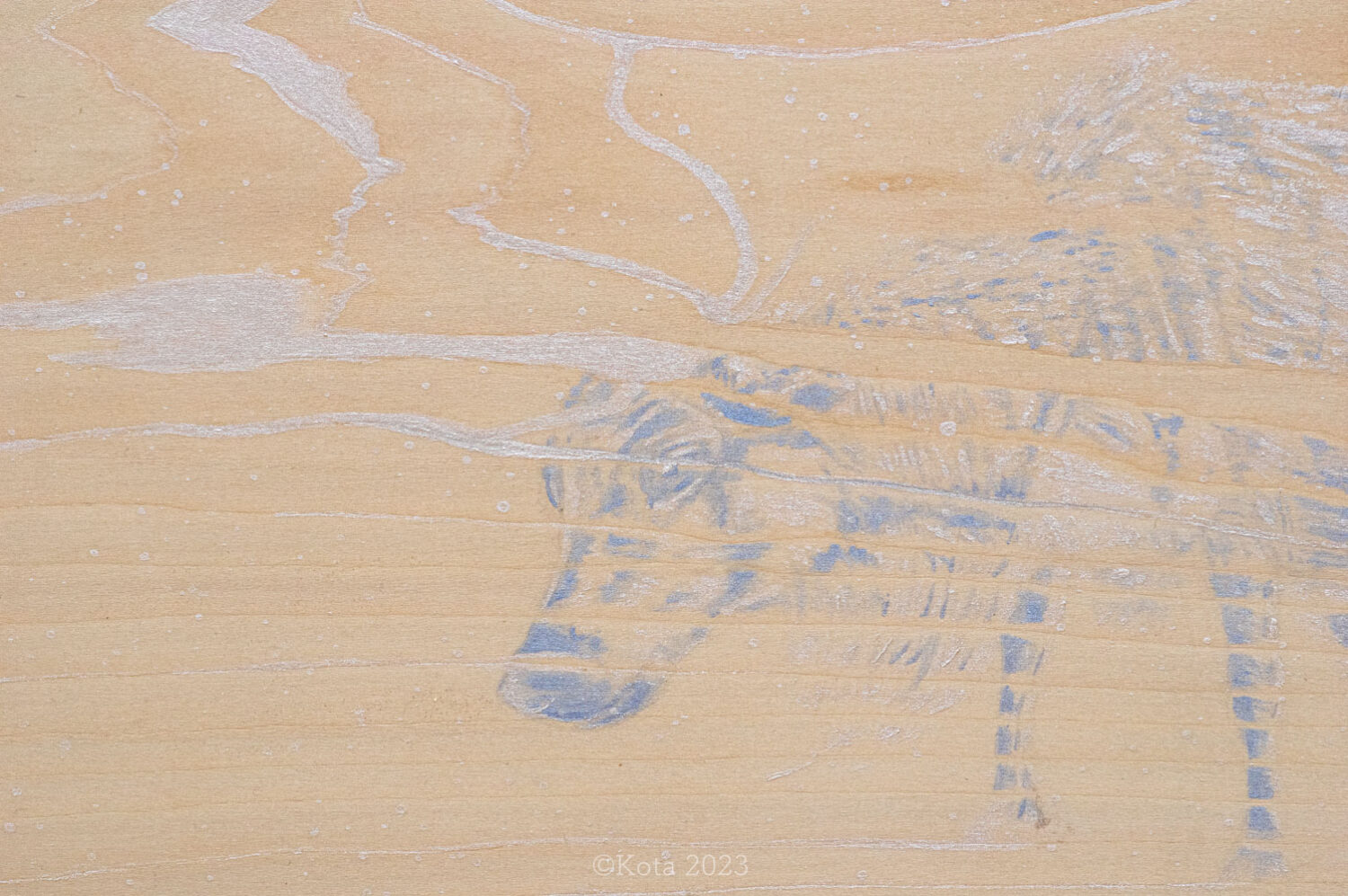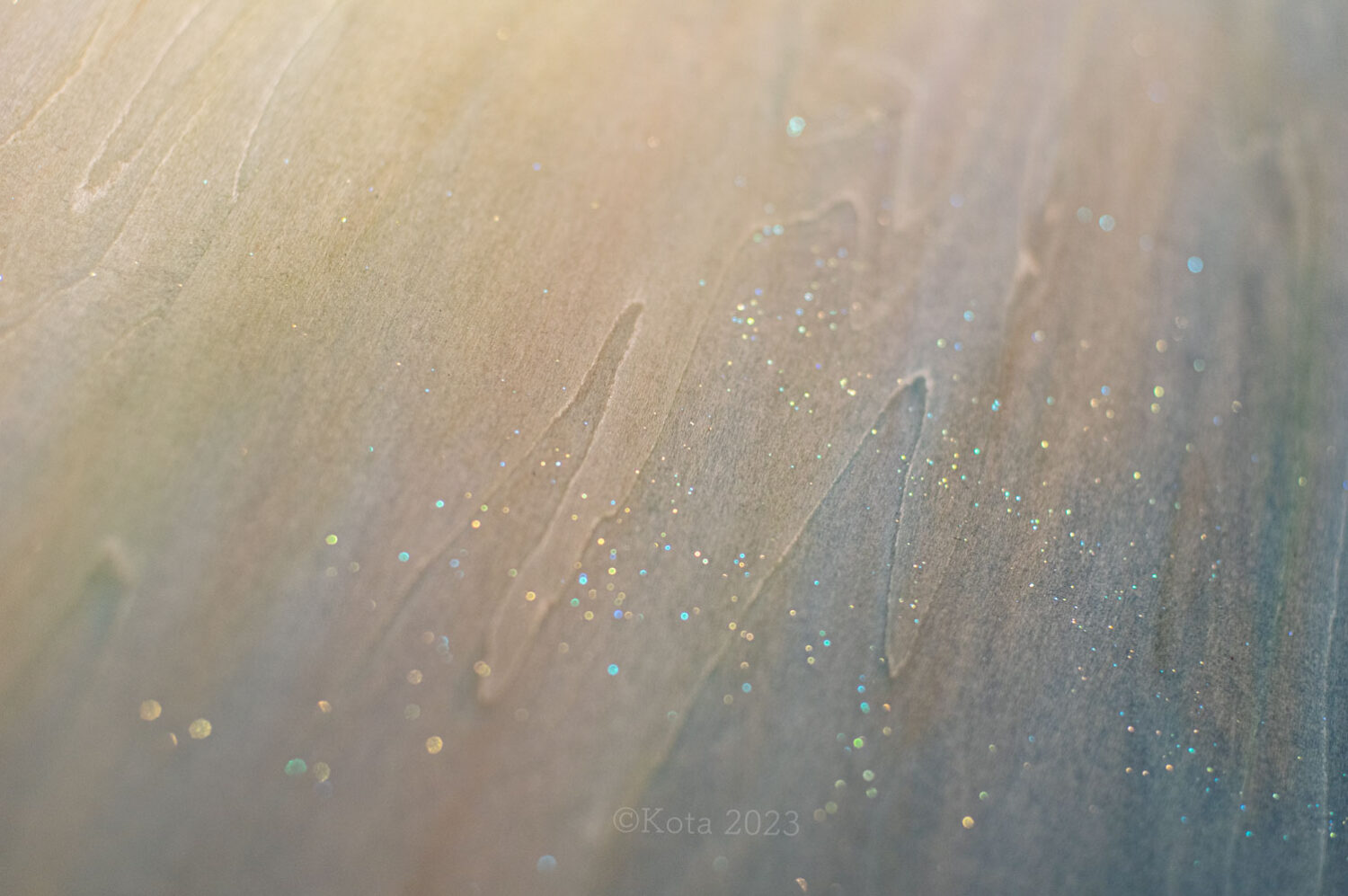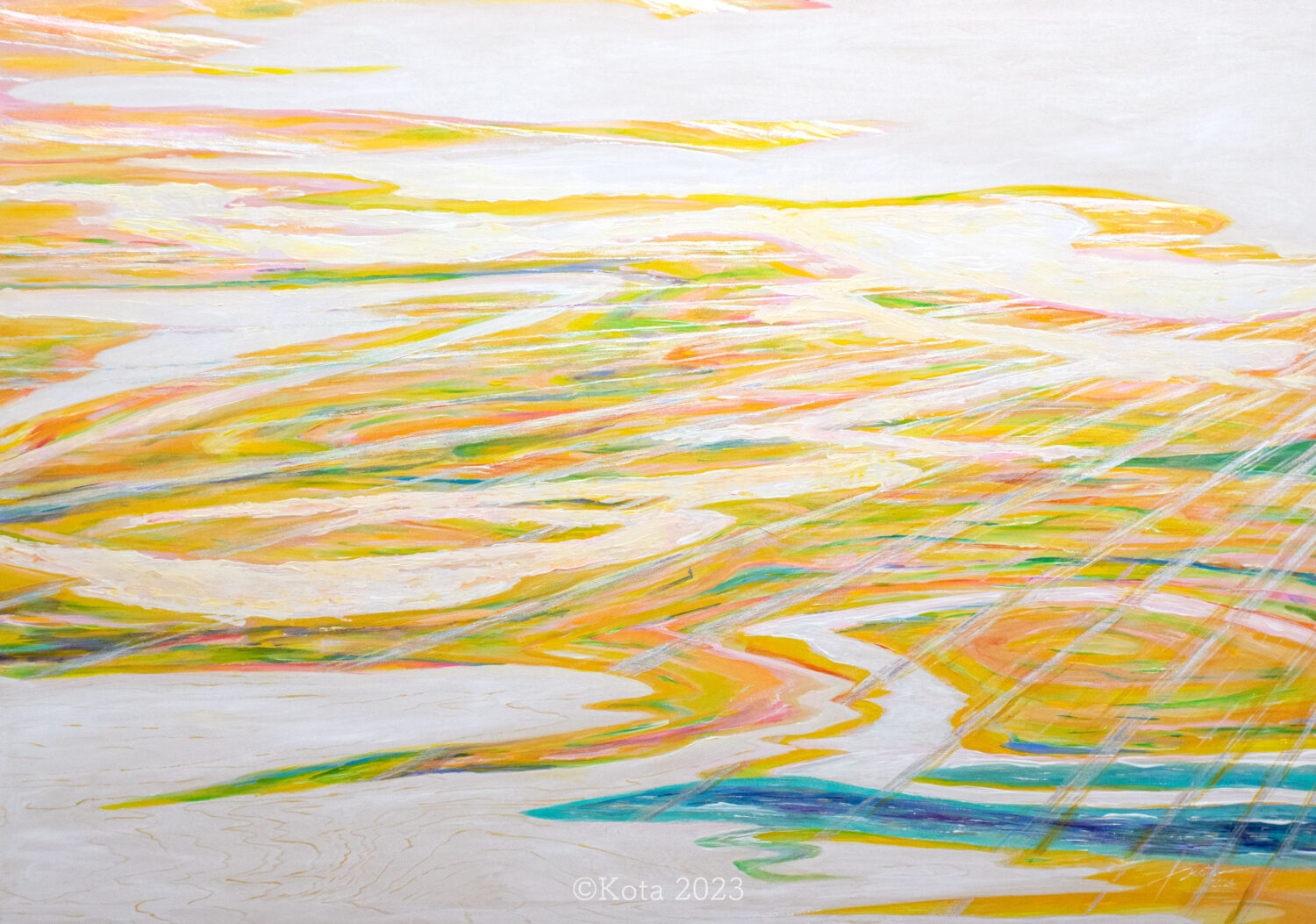Poet: Cosmic Rhythm
The grain of the wood. It is the design created by earth. It is the rhythm of the cosmos.
The mysterious fluctuation like the shape of waves and clouds is the rhythm of the cosmos, itself.
Kota | Artist Statement | Short Version
My art is based on the philosophical concept of Oneness—the belief that everything in the cosmos is interconnected as one. This belief is rooted in my solitary journeys and the mystical experiences I encountered along the way. By painting directly on wood, I express harmony with nature. The wood grain is a natural pattern that records the rhythm of time, environment, and the cosmos. By aligning with this rhythm, I weave a narrative where nature and humanity, past and future, the individual and the whole, come into harmony. This approach resonates with the principle of dependent origination taught by Shakyamuni (5th–6th century BCE), as well as traditional Japanese values such as wabi-sabi, nature reverence, and ichigo ichie.
My works have been exhibited mainly in Tokyo and Amsterdam, where many viewers have shared their feelings of experiencing the rhythm of the cosmos and nature through my pieces. I believe my art has the potential to transcend mere visual beauty, carrying profound philosophical messages. The use of wood, a natural material, and the unique grain patterns in each piece suggest a timeless beauty and harmony that is unaffected by trends or time.
Through my art, I hope that viewers will feel the cosmic rhythm embedded in the wood grain and gain new perspectives and insights. I believe this experience can help illuminate a hopeful future for humanity and inspire new ways of connecting with the world around us.
(Long Version is below)
Kota | Artist Statement | Long Version
My artistic concept is an attempt to visualize the philosophical idea of "Oneness"—the belief that everything in the cosmos is interconnected as one. This belief stems from my long solitary journeys and the mystical experiences I encountered along the way. It is this deeper understanding of the unity of all things that I seek to express through my artwork.
I express this harmony with nature through direct painting on wood. The wood grain is a natural pattern that reflects the movement of the cosmos, recording the passage of time, environmental changes, and the rhythm of the cosmos itself. By respecting and painting with this cosmic rhythm, I create visual stories where nature and humanity, the past and the future, the individual and the whole, harmonize together. This approach is influenced by the teachings of Shakyamuni (the Buddha) from the 5th to 6th century BCE, particularly his law of dependent origination, which asserts that everything exists interdependently.
The uniqueness and beauty inherent in the wood itself serve as a key feature of my art. At the same time, these qualities are in alignment with traditional Japanese aesthetic values such as "wabi-sabi" (the beauty of imperfection and transience), "nature worship" (the idea that divinity resides in nature), and "ichigo ichie" (the preciousness of each encounter). By incorporating these elements, I explore the cosmic theme of the relationship between humanity and nature.
My works have been exhibited mainly in Tokyo and Amsterdam, and I have received feedback from many viewers who report feeling a connection to the rhythm of the cosmos and nature in my pieces. I aim for my work to serve as a bridge that reminds the viewer of the beauty of nature, the diversity of life, and our connection to the cosmos.
In the contemporary art market, I believe my works hold timeless potential as they transcend visual beauty, conveying profound philosophical messages. They encompass the cosmic themes of humanity's long-standing questions regarding the relationship between human beings, nature, and the cosmos. The use of wood, a natural material, and the unique grain patterns inherent in each piece suggest a beauty and harmony that is not influenced by trends or time, but speaks to something eternal.
I hope that my works, displayed in various spaces, can offer moments of quiet and harmony, allowing many people to experience the rhythm of the cosmos. This experience may offer a new perspective, allowing individuals to reconsider their connection to themselves and the world around them. Through my art, I hope that viewers will feel the cosmic rhythm embedded in the wood grain, and that this feeling will inspire new insights or actions. By contemplating the deep interrelationship between humanity, nature, and the cosmos, I believe my work can help shed light on a hopeful future for humankind.
(All techniques and ideas presented herein are the intellectual property of the artist Kota and are protected by copyright laws. In the event of an allegation of plagiarism, legal action may be pursued.)




